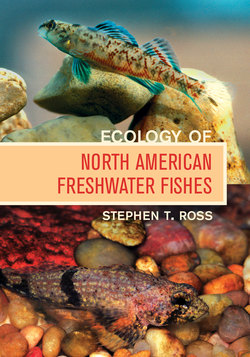Читать книгу Ecology of North American Freshwater Fishes - Stephen T. Ross Ph. D. - Страница 10
На сайте Литреса книга снята с продажи.
ОглавлениеPART ONE
Faunal Origins, Evolution, and Diversity
Fishes represent the most diverse and species-rich group of craniate organisms. In this part, the focus is on introducing the freshwater fish faunas of the world and on the unique nature of the North American freshwater fish fauna (Chapter 1). Chapters 2 and 3 deal with the very basic issues of where the North American freshwater fish fauna came from, how long various fish lineages have occurred in North America, and how the fauna has been shaped by large scale geologic and climatic events.
A useful way of thinking about why certain fish species occur in particular regions, water bodies, and local habitats is to envision an ancestral fauna being shaped by a series of filters. Some filters can be stronger than others and, of course, some taxa might be better at surmounting the challenges imposed by the filters. The broadscale filters are the concern of Part 1 (see the following figure), the end result being an understanding of the origins and ages of North American regional fish faunas. Subsequent parts will move through smaller scale, more local filters, leading to an understanding of factors shaping the occurrence of fishes in local habitats such as a particular pond, lakeshore, riffle, or run.
A conceptual model of the formation of fish assemblages through progressive loss (i.e., filtration) and through the progressive addition (i.e., speciation) of lineages. Adapted in part from Smith and Powell (1971); Poff (1997); Matthews (1998); Tonn et al. (1990); Rahel (2002); Ross and Matthews (in press).
